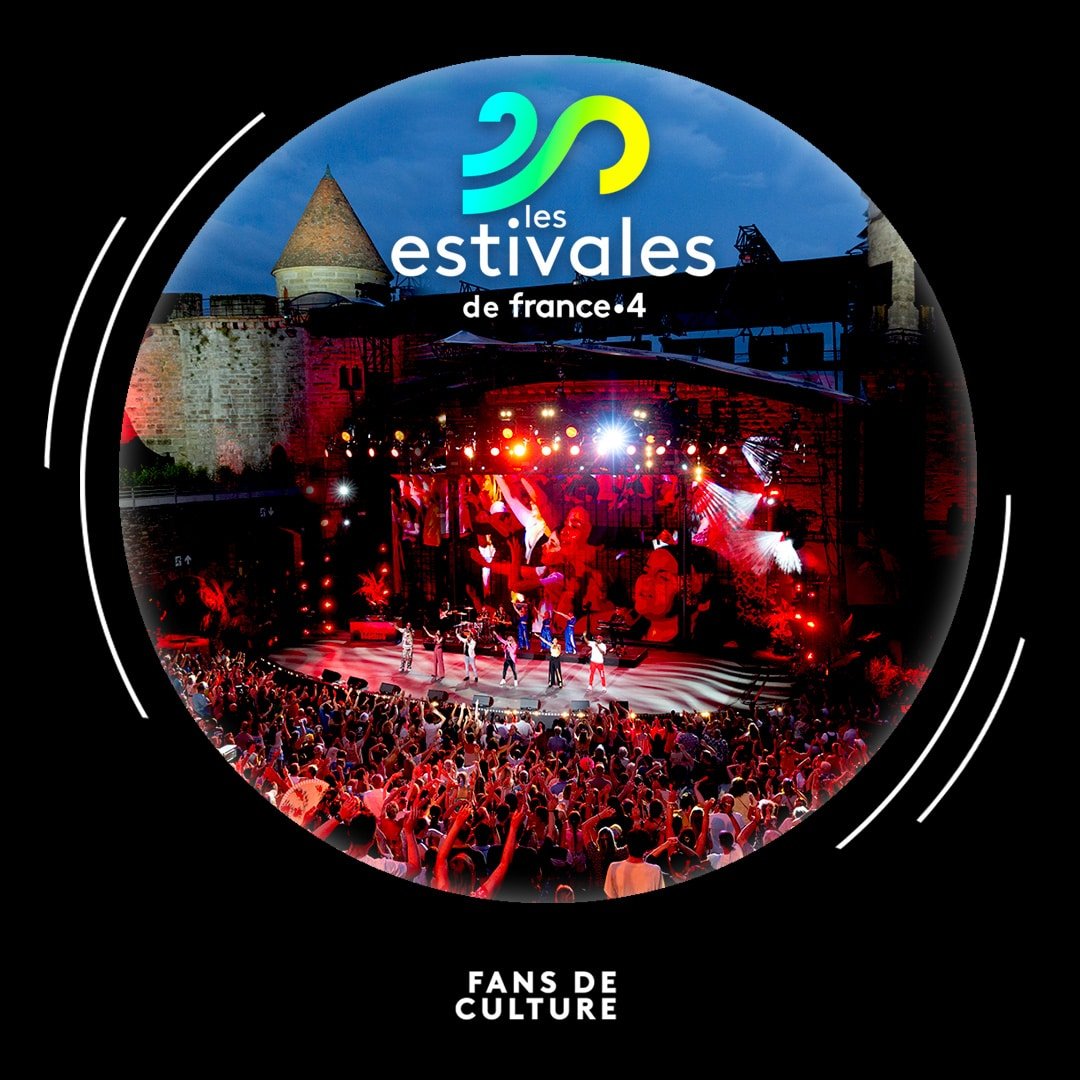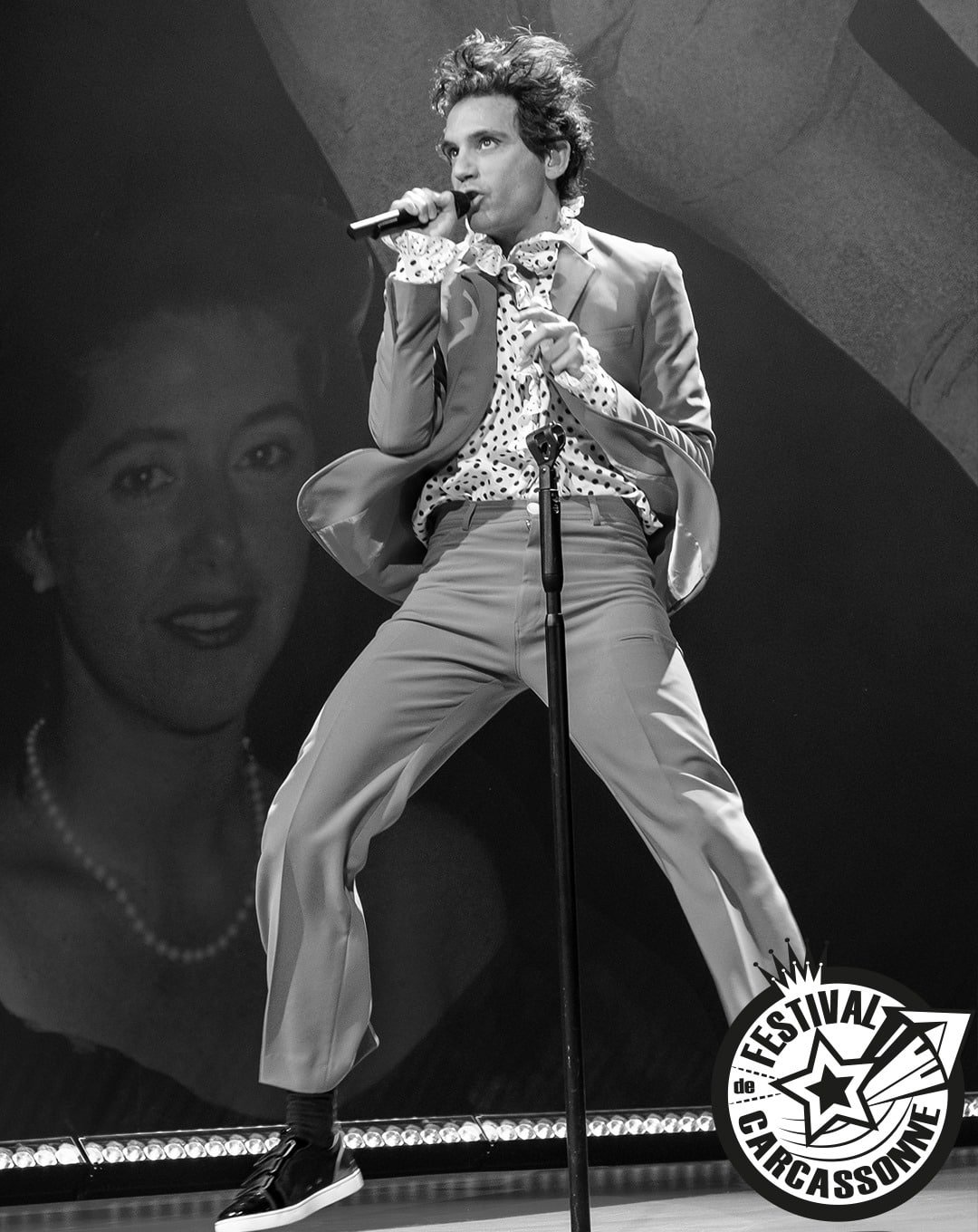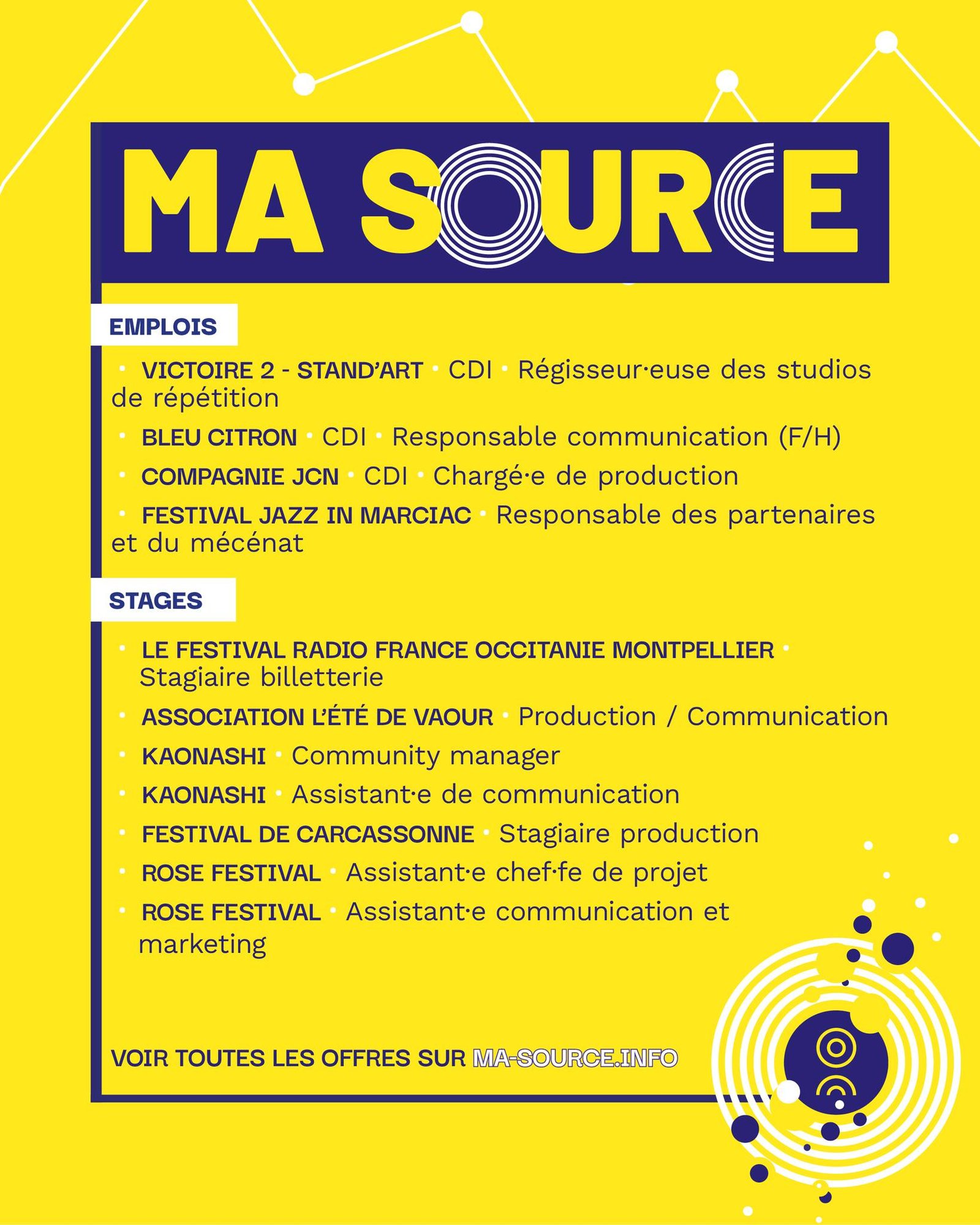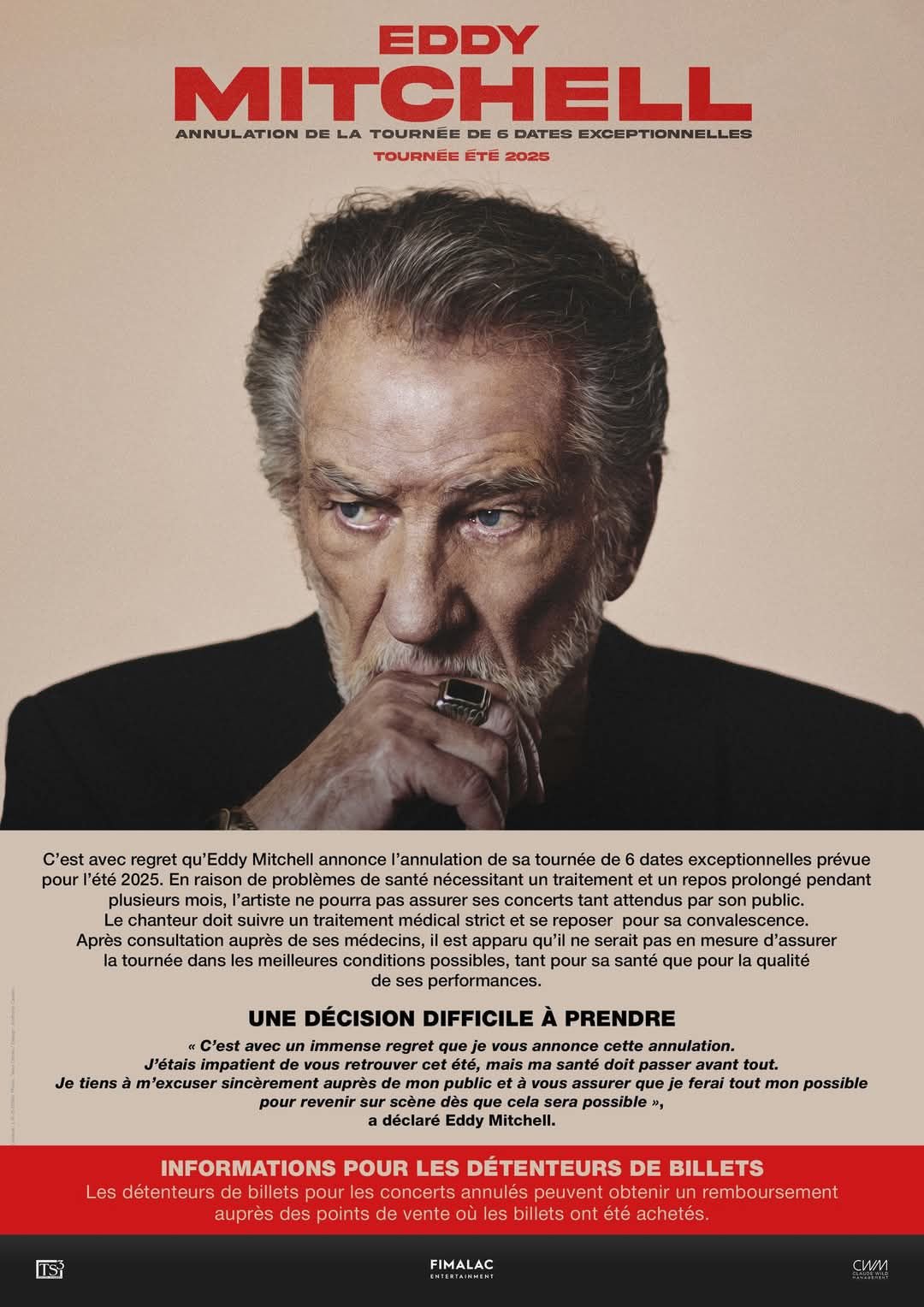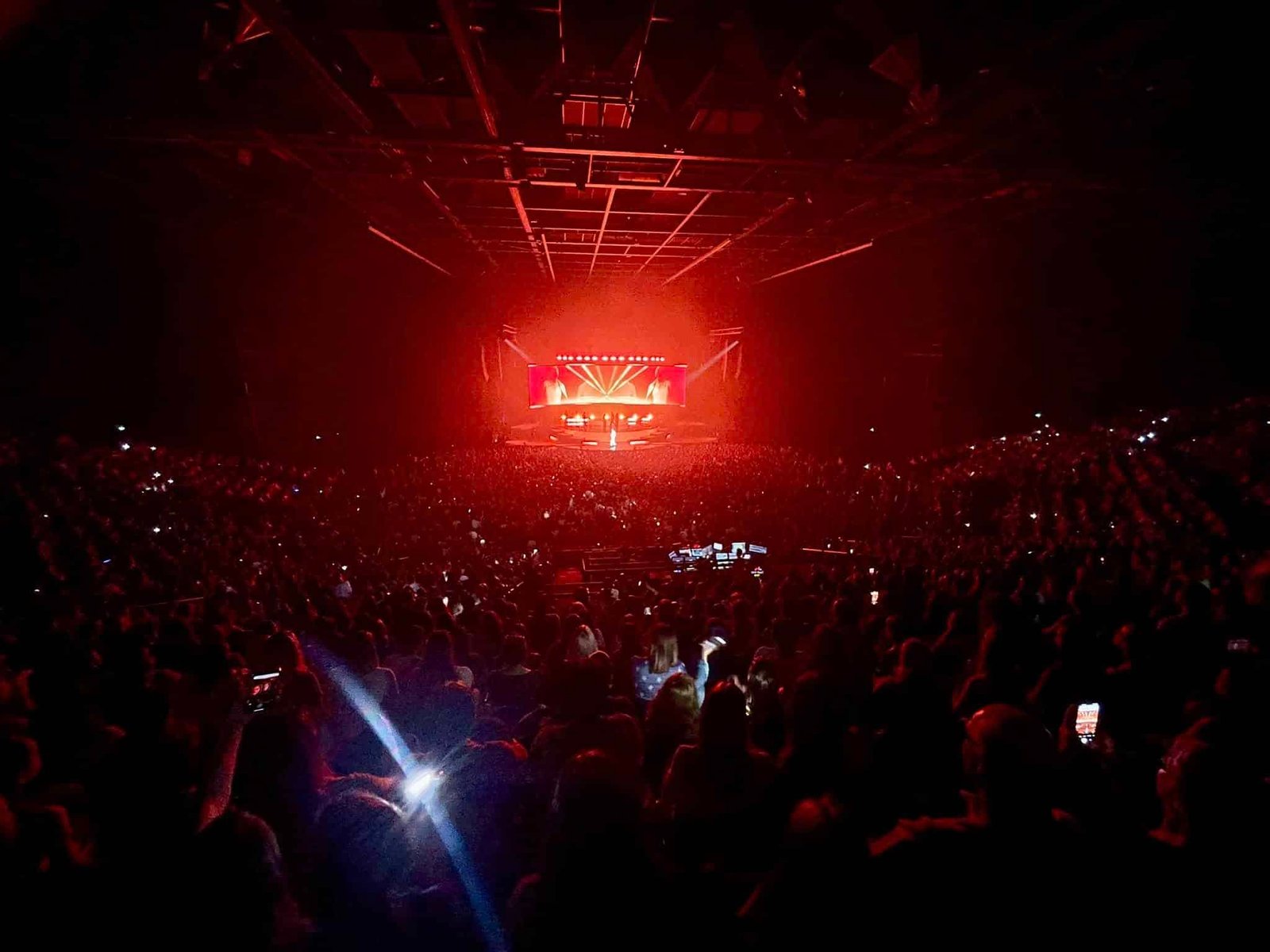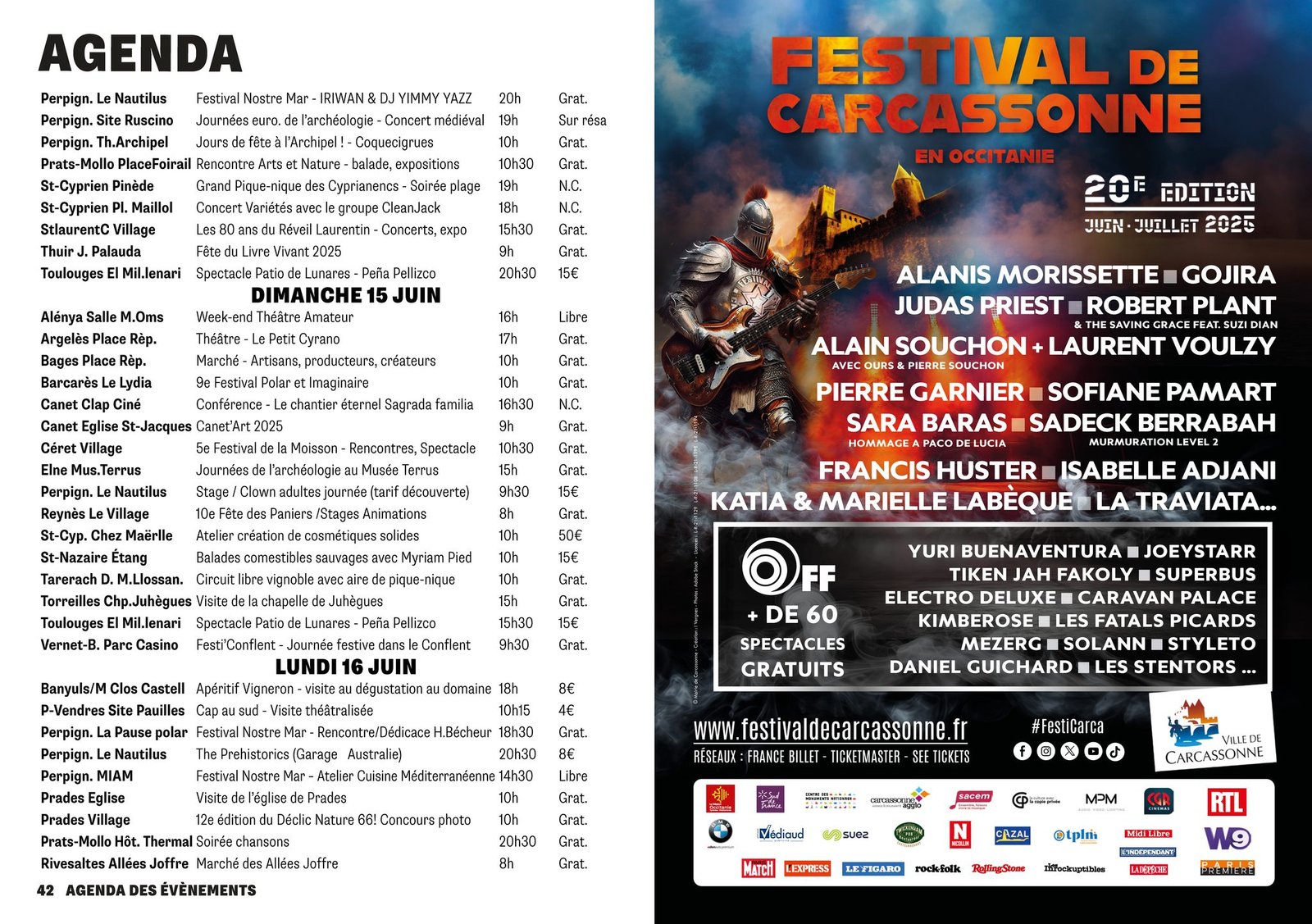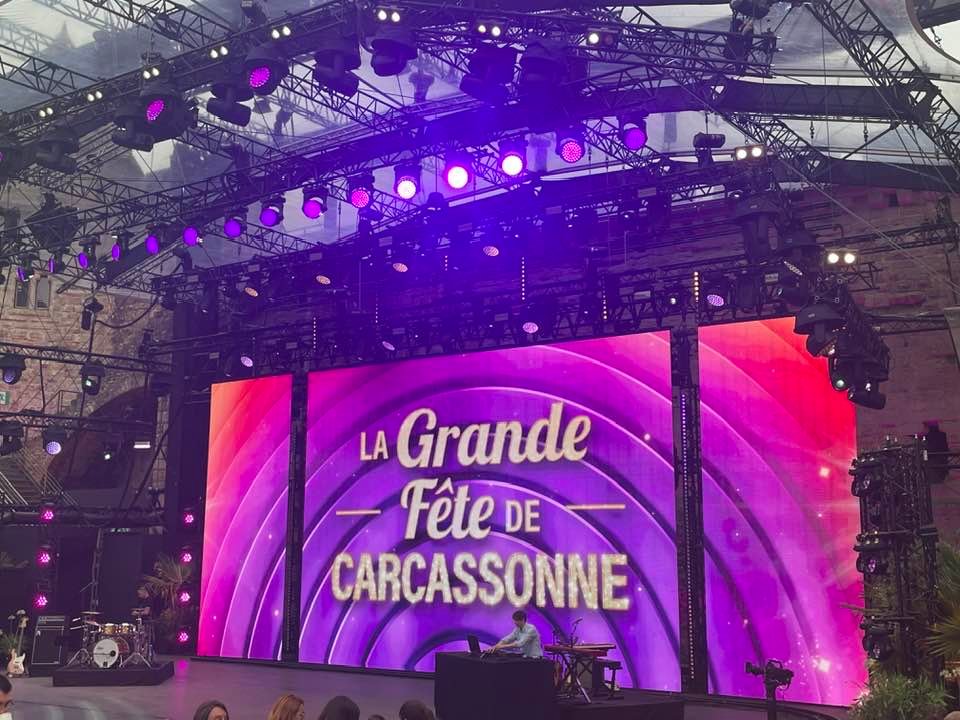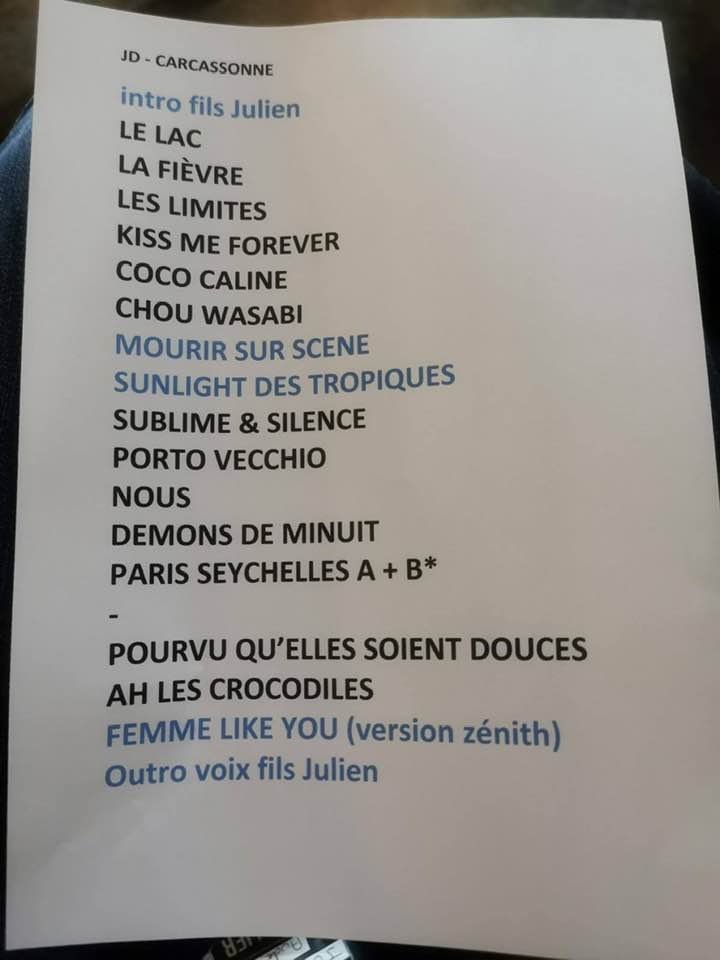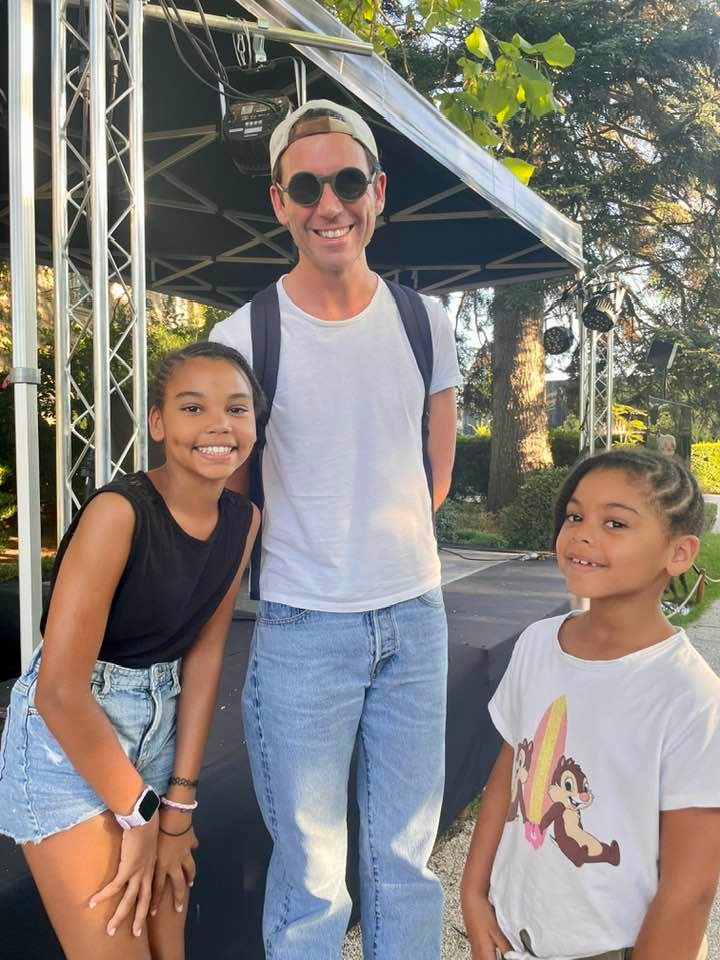Festival de Carcassonne – France 2026
Background & History
- Origins and Establishment: The Festival de Carcassonne was founded in 2005 as a vibrant summer cultural extravaganza in the heart of the UNESCO-listed medieval city of Carcassonne, drawing inspiration from the town’s ancient Roman and Visigoth roots to create a platform for contemporary arts; it emerged from local initiatives to revive the city’s festive traditions, blending music, theater, and dance amid the 13th-century ramparts that have stood since the Albigensian Crusade in 1209.
- Early Growth and Expansion: Starting with modest concerts in the Théâtre Jean-Deschamps, it quickly expanded by incorporating the OFF program of free street performances in the Bastide Saint-Louis, attracting 50,000 visitors by 2010; the festival grew to include international stars, reflecting Carcassonne’s historical role as a Cathar stronghold and trade hub on the route to Spain, with events spilling into 12 stages across the Cité Médiévale and lower town.
- Evolution and Modern Focus: Over two decades, it has evolved into one of France’s top 10 festivals, with 120+ shows annually (80 free), emphasizing eclectic genres from rock and opera to flamenco; post-2020, hybrid formats were introduced for accessibility, and 2026 will highlight sustainability themes tied to Occitanie’s eco-initiatives, building on 2025’s record 200,000 attendees and stars like Gojira and Alanis Morissette.
- Cultural Significance: Set against Carcassonne’s dual UNESCO sites—the fortified Cité and Canal du Midi—the festival celebrates the city’s 2,000-year legacy from Roman Oppidum to medieval fortress, fostering social cohesion through inclusive programming that echoes the legend of Dame Carcas ringing bells to repel Charlemagne; it promotes Occitan heritage, drawing global audiences to explore themes of resilience and creativity in a living museum that once housed Cathar heretics.
- Recent Developments and Future: The 2025 edition featured 21st-century premieres like Sara Baras’ flamenco tribute to Paco de Lucía; for 2026’s 22nd edition, expect expanded IN Festival collaborations with European houses, youth residencies, and ties to the Tour de France stage arrival, reinforcing its €10M+ economic impact on Aude’s tourism while advocating for preserved public spaces in historic centers.
Event Highlights
- Main Activities or Performances: Over 120 concerts, operas, dances, and theater pieces, including headline rock/metal shows (e.g., Gojira’s 2025 set with 3,000 capacity in the Cité), flamenco ballets like Sara Baras’ Vuela, and orchestral evenings in the Château Comtal courtyard; diverse genres from pop (Mika, Julien Doré) to classical, with 2026 poised for similar star power.
- Special Traditions or Features: The IN Festival’s intimate Théâtre Jean-Deschamps galas with sunset acoustics; OFF Festival’s free street spectacles in Bastide squares, echoing medieval markets; July 14 Embrasement de la Cité fireworks from ramparts (700,000 spectators); closing parade with local brass bands blending Occitan folk and modern beats.
- Unique Attractions for Visitors: Site-specific illuminations on 3km of ramparts; falconry and jousting tie-ins during intermissions; VR tours of Cathar history at the basilica; pop-up artisan markets with medieval crafts; guided night walks exploring siege legends, enhanced by festival projections.
- Educational Initiatives: Youth workshops on stage design in collaboration with Occitanie conservatories; free family storytelling sessions on Dame Carcas legend; artist residencies for 50+ emerging talents, including masterclasses with international guests like Isabelle Adjani’s 2025 poetic performance.
Date & Duration
| Date | Artist / Show | Venue | Time |
| July 1 | Ludovico Einaudi | Théâtre Jean-Deschamps | 21h30 |
| July 2 | Clair Obscur: Expedition 33 | Théâtre Jean-Deschamps | 21h30 |
| July 4 | Laurent Gerra | Théâtre Jean-Deschamps | 21h30 |
| July 9 | Jean-François Zygel | Château Comtal | 21h30 |
| July 12 | Carmina Burana (Opera) | Théâtre Jean-Deschamps | 21h30 |
| July 15 | Feu! Chatterton | Théâtre Jean-Deschamps | 21h30 |
| July 16 | Chris Isaak | Théâtre Jean-Deschamps | 21h30 |
| July 18 | Christophe Maé | Théâtre Jean-Deschamps | 21h30 |
| July 20 | Airbourne | Théâtre Jean-Deschamps | 20h30 |
| July 21 | Héléna | Théâtre Jean-Deschamps | 21h30 |
| July 22 | Tom Odell | Théâtre Jean-Deschamps | 21h30 |
| July 27 | Franz Ferdinand | Théâtre Jean-Deschamps | 21h30 |
| July 28 | Sex Pistols | Théâtre Jean-Deschamps | 21h30 |
| July 29 | Asaf Avidan | Théâtre Jean-Deschamps | 21h30 |
| July 31 | Kool and the Gang | Théâtre Jean-Deschamps | 21h30 |
Venue / Location
- City and Main Venue: Carcassonne, Occitanie, France, with Théâtre Jean-Deschamps (ancient Roman theater) as the flagship for headline concerts; secondary hub at Château Comtal courtyard for operas and intimate sets.
- Additional Sites: 12 stages including Place du Château (OFF free shows), Salle du Chapeau Rouge (theater), Cité des Sports (family events), Centre de Congrès du Dôme (billetterie and exhibits), and ramparts for fireworks; notable areas: Bastide Saint-Louis squares for street performances, Basilique Saint-Nazaire for sacred music echoes.
- Google Maps Address: Centre de Congrès du Dôme, Rue Hélène Boucher, 11000 Carcassonne, France.
Ticket Information
- Sales Channels: Online via pacbilletterie.fr (opens March 2026); on-site at Centre de Congrès du Dôme box office (Mon–Thu 10am–12:30pm/2–5:30pm, Fri 10am–12:30pm); phone +33 4 68 11 59 15; group bookings via pacbilletterie@mairie-carcassonne.fr; no lottery, but priority for locals via app.
- Admission Type: Mix of paid (IN Festival headlines, operas) and free (80 OFF shows, street events, fireworks); some broadcasts via France Inter for remote access.
- Ticket Pricing (USD): Minimum $11 (concessions for students/under 26/seniors or reduced mobility/PSH for single OFF-adjacent events or workshops; based on 2025 €10 structure, converted at 1 EUR ≈ 1.10 USD); maximum $110 (full price for premium seats at sold-out rock concerts like Gojira in Cité Médiévale; includes fees).
- Packages: Festival Pass $77 (10+ events, 20% off dining); Family Bundle $44 (includes kids’ zones and rampart access); Combined IN+OFF $55 (headline + free streets).
- Policies: No refunds/exchanges; seated/numbered for IN, libre for OFF; age restrictions (some 18+ for late-night rock); tickets include same-day Cité entry; PSH/PMR via phone inquiry.
- Special Seating/VIP Options: VIP packages ($66–$165 USD) with reserved golden circle seats at Théâtre Jean-Deschamps, artist meet-and-greets, and exclusive Château receptions; accessible front-row with free companions; priority upgrades for sponsors ($22 extra). Deluxe VIP ($220 USD) offers unlimited access, private rampart dinners, and helicopter transfers—the highest range for ultimate immersion.
Contact Information
- Email: pacbilletterie@mairie-carcassonne.fr (tickets); programmation@mairie-carcassonne.fr (program); info@festivaldecarcassonne.fr (general); presse@festivaldecarcassonne.fr (press).
- Phone: +33 4 68 11 59 15 (billetterie, English/French); +33 4 68 10 24 06 (tourist office for add-ons).
- Website: https://www.festivaldecarcassonne.fr (program, bookings); https://pacbilletterie.fr (tickets); https://www.tourisme-carcassonne.fr (visitor info).
- Social Media: @festicarca (Instagram/TikTok for lives, teasers); @FestivaldeCarcassonneofficiel (Facebook for announcements); @FestiCarca (Twitter for updates).
- Key Staff: Festival Director – Artistic Team (programmation@mairie-carcassonne.fr); Billetterie Lead – PAC Office; Press – presse@festivaldecarcassonne.fr.
- Press/Volunteers: Accreditation via presse@festivaldecarcassonne.fr (kits spring 2026); volunteer apps via info@festivaldecarcassonne.fr (ushering, setup; 100+ spots, opens April).
- Note: Response time ~24–48 hours; multilingual (English, French, Spanish); office at Centre de Congrès du Dôme; newsletter signup on site.
Cultural Experience
- Traditions: Revives medieval pageantry with rampart illuminations and July 14 Embrasement fireworks, echoing Cathar resistance legends; OFF street dances blend Occitan folk with modern flamenco, fostering communal gatherings in Bastide squares since the 13th-century market era.
- Music and Performances: Eclectic from metal (Gojira’s raw energy) to poetic recitals (Isabelle Adjani’s 2025 Murmures de l’Âme), set against Château acoustics; live brass fanfares open galas, integrating regional bands with global acts like Alanis Morissette.
- Costumes and Aesthetics: Performers in flamenco ruffles or rock leather contrast with medieval-inspired lighting on ramparts; visuals evoke Visigoth tapestries, with projections of Cathar sieges enhancing the fortress’s golden-hour glow.
- Local Customs: Post-show cassoulet feasts in enoteche; family jousting workshops tie to Albigensian history; audience conga lines in squares promote Languedoc conviviality, blending Spanish influences from nearby Catalonia.
Food & Drinks
- Must-Try Specialties: Cassoulet (white bean stew with duck confit and sausage) from Cité bistros, a Cathar-era staple; black truffle omelets from Aude forests; fougasse (olive bread) as street snacks.
- Festival-Specific Offerings: Pop-up bodegas in Bastide with Minervois rosé and grilled sardines during OFF; Château receptions feature foie gras and Armagnac; vegan stalls with ratatouille niçoise at family zones.
- Dietary Options: Gluten-free: Socca pancakes or grilled vegetable platters; halal tagines via multicultural vendors; allergy-friendly menus at Dôme (notify via email).
- Drinks: Local Blanquette de Limoux sparkling (€4–7/glass, world’s oldest bubbly); festival spritz with verjus; non-alcoholic elderflower cordials from regional herbs.
Getting There
- Airports: Carcassonne Salvaza (CCF, 5km/10min taxi €10–15); Toulouse-Blagnac (TLS, 100km/1hr train €15–20); Perpignan (PGF, 100km/1.5hr drive).
- Public Transport: SNCF trains to Carcassonne station (from Paris 5hr €50–80); local buses to Cité (€1.50); festival shuttles from Dôme parking.
- Parking: Free at Dôme entrance; rampart-adjacent lots €5–10/day; carpool via BlaBlaCar.
- Walking/Cycling: 10min from station to Bastide; Vélo à la Carte bikes (€5/day); accessible paths via lifts to Cité.
- Sustainability and Accessibility: Eco-shuttles with passes; wheelchair ramps at stages; EV charging at Dôme.
Accommodation Options
- Budget: Hostels like De la Cité (€40–70/night, near ramparts); campsites at Lac de la Cavayère (€30–50/tent).
- Mid-Range: Hotels like du Château (€80–130/night, medieval views); B&Bs in Bastide (€60–100).
- Luxury: La Barbacane (€200–300/night, Relais & Châteaux in Cité); Domaine d’Auriac (€250–400, spa).
- Festival Packages: Festival + stay via Booking.com (€100–180/night, includes bus pass); Airbnbs in Trèbes (€70–120, 10min drive).
- Family/Group Options: Aparthotels like Ibis Styles (€110–170, kitchens); gîtes in Aude countryside (€90–150/group).
Maps
Contact
Video
FAQ's
What are the exact dates and key highlights for Festival de Carcassonne 2026?
The 22nd edition runs July 3–25, 2026 (23 days), with 120+ shows including rock headliners in Cité, flamenco at Théâtre Jean-Deschamps, and free OFF streets; highlights: Embrasement fireworks (July 14), Sara Baras-style ballets, and 200,000+ visitors, celebrating 20+ years of medieval magic.
How do I buy tickets, what are the prices, and are there special options?
Online at pacbilletterie.fr (March 2026) or +33 4 68 11 59 15; prices $11–$110 USD (concessions to premium); VIP $66–$165 with receptions; Deluxe $220 (highest range: unlimited + helicopter); 80 free OFF; no refunds, seated for IN; family $44.
What venues host performances, and how do they connect to Carcassonne’s history?
Main: Théâtre Jean-Deschamps/Centre de Congrès du Dôme, Château Comtal; others: ramparts, Bastide squares; ties to 1209 Crusade sieges and Roman origins, turning UNESCO fortresses into sonic stages for Cathar-era echoes.
Is the event accessible and suitable for families or diverse audiences?
Family-friendly with kids' zones and free OFF; accessibility: ramps, PSH tickets, free companions; diverse genres (rock to opera) with French/English guides; sensory fireworks zones; eco-shuttles for all.
How does the 2026 festival contribute to its legacy and Occitanie’s cultural scene?
As a top-10 French fest since 2005, it draws 200,000+ with €10M impact, blending Albigensian heritage with global stars; promotes sustainability, youth arts, and tourism in Aude, cementing Carcassonne's role as a medieval-modern crossroads.

